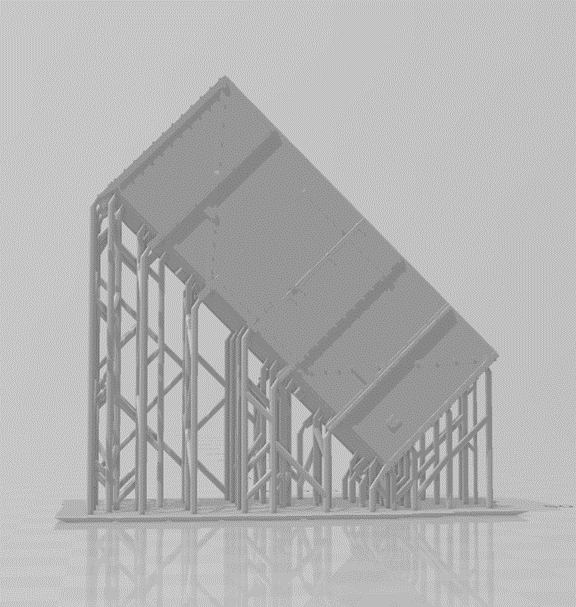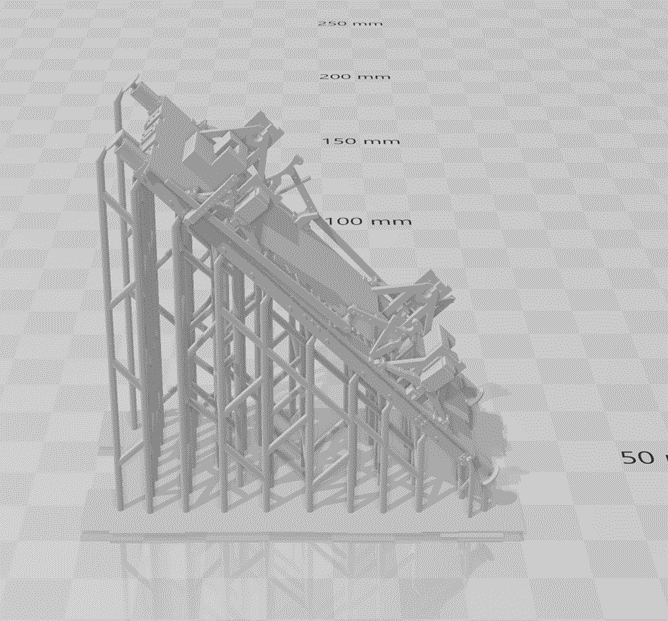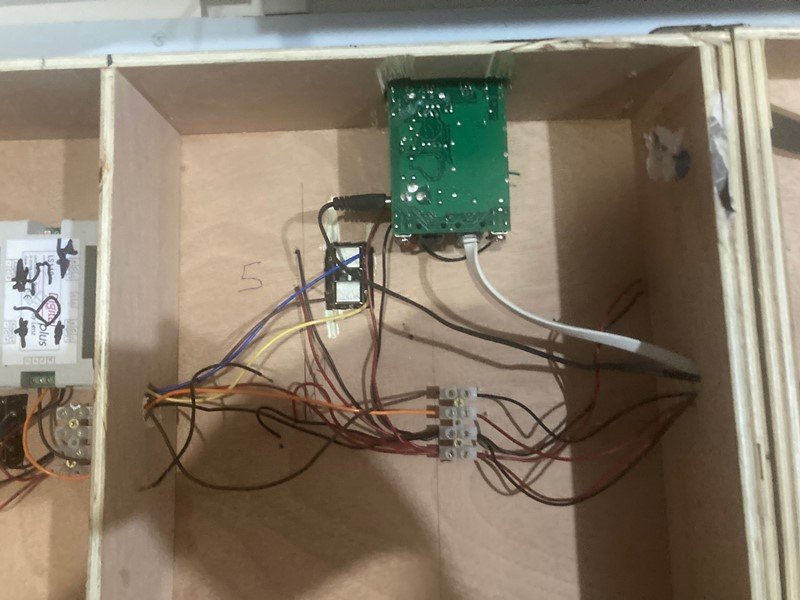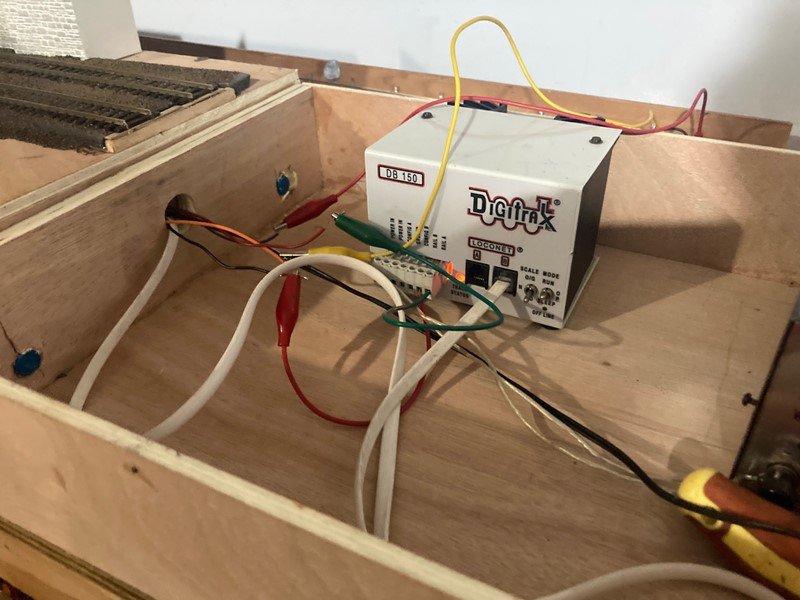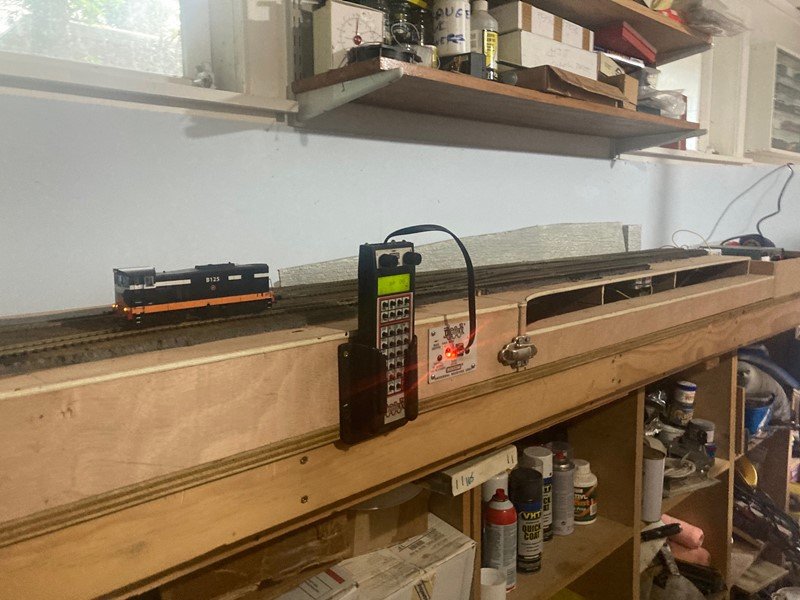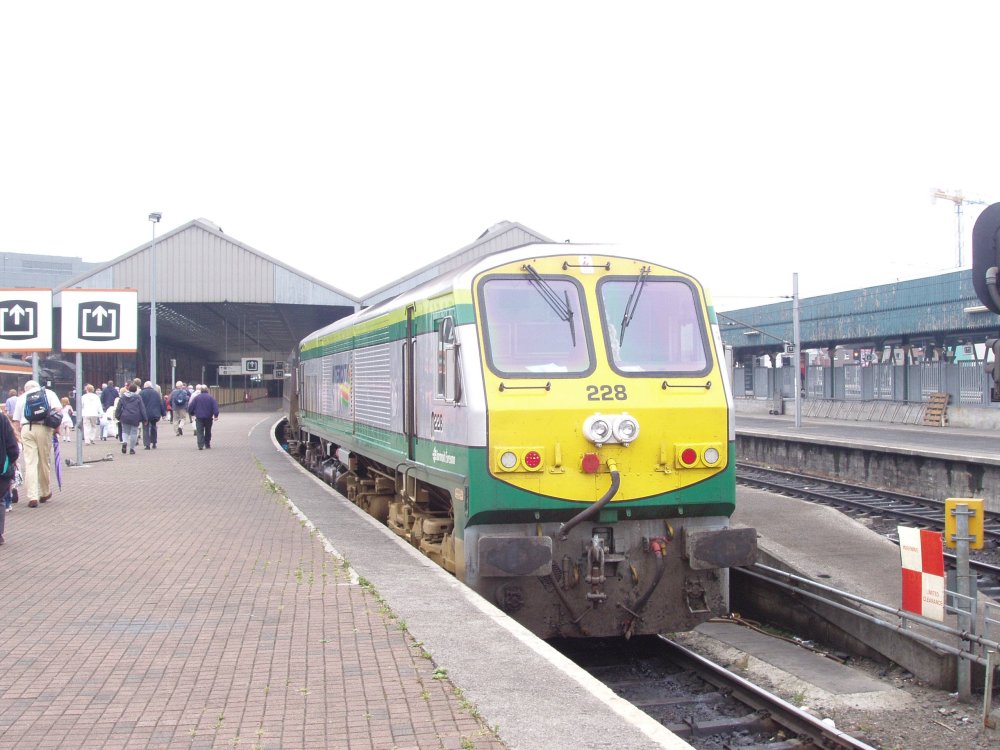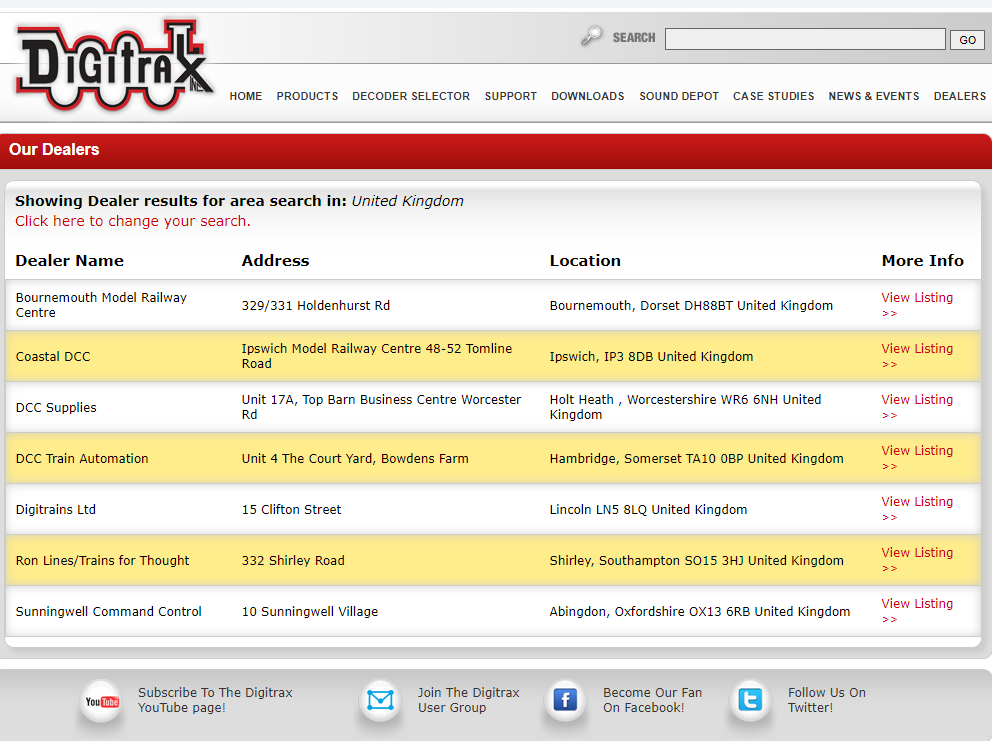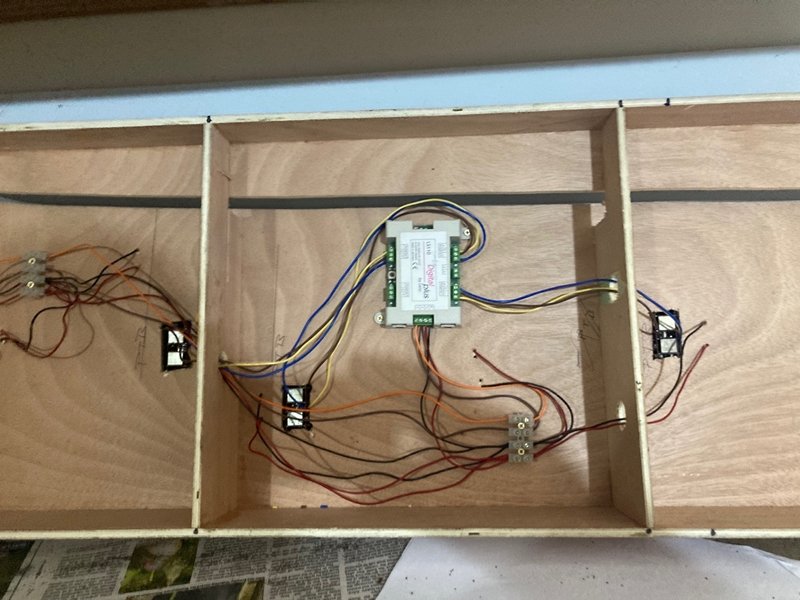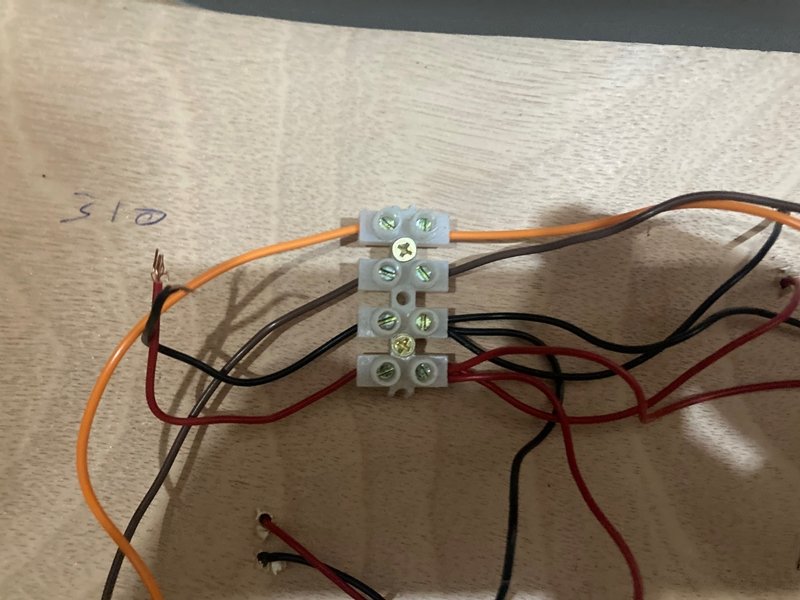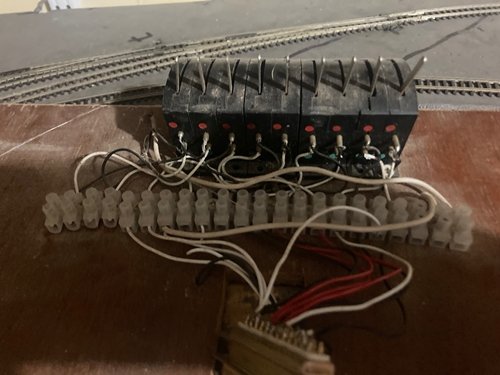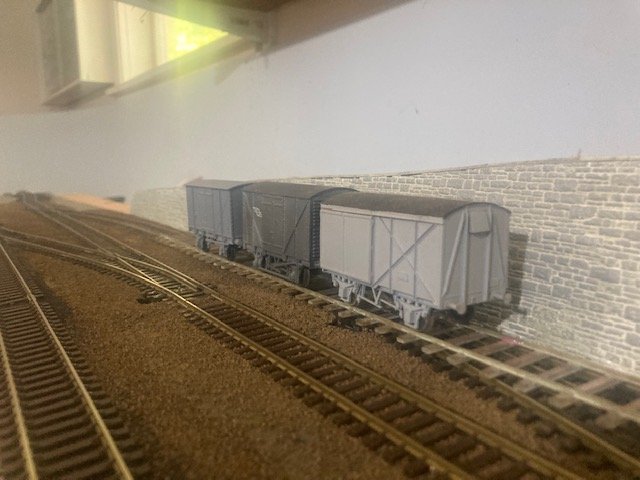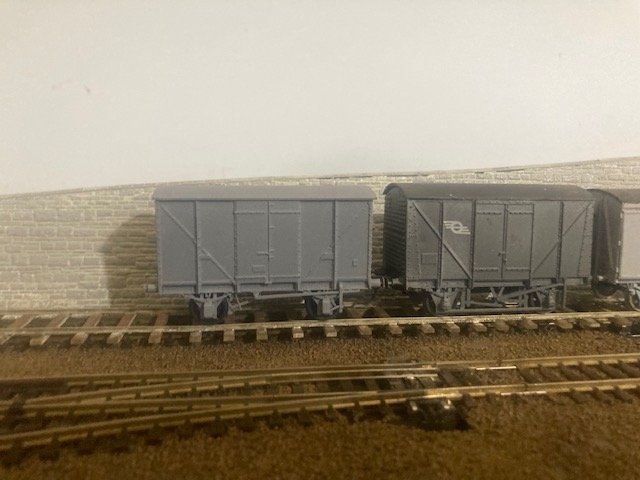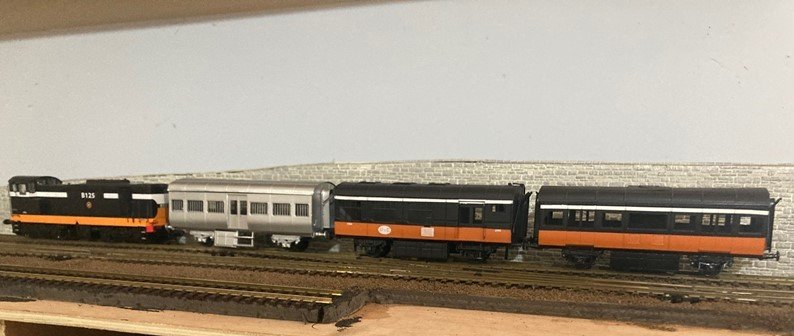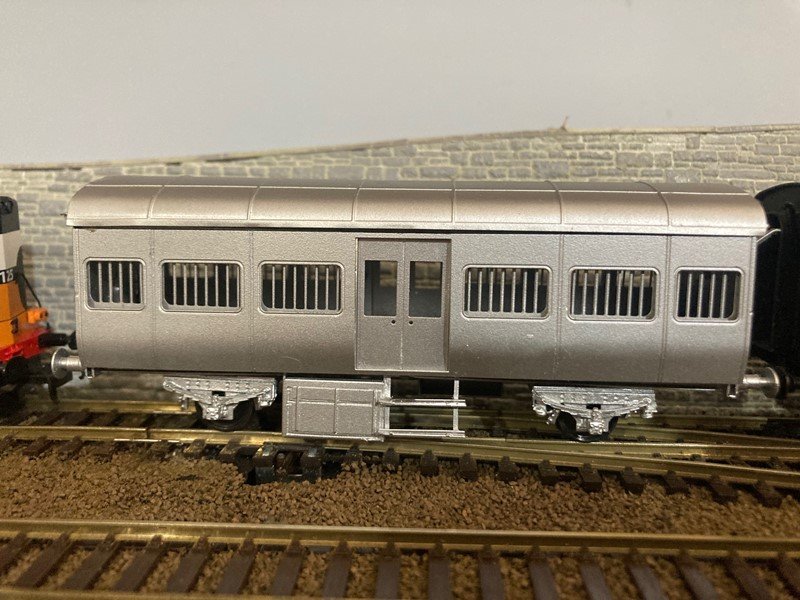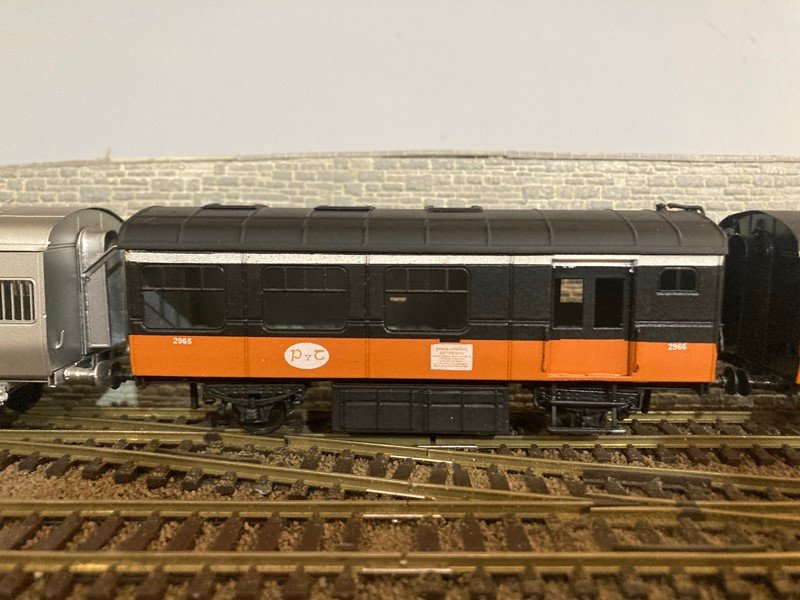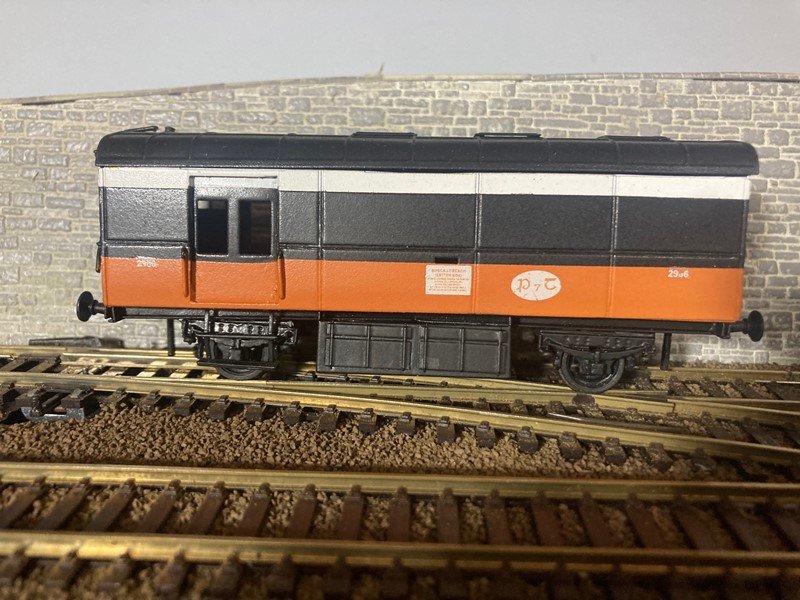-
Posts
4,880 -
Joined
-
Last visited
-
Days Won
119
Content Type
Profiles
Forums
Events
Gallery
Everything posted by Mayner
-

Ernies Massive Irish 1930's to 2005 Photo Archive
Mayner replied to Glenderg's topic in Photos & Videos of the Prototype
Traditionally the railways tried to lift and abandon closed lines as quickly as possible in order to dispose of the track bed and extinguish any potential liability claims. A closed line continues to be a drain on the railways finances until the line is abandoned and and the trackbed sold. I had a friend in BR who's job in the 1990s was extinguishing liabilities on lines closed during the Beeching era mainly transferring the liability for fencing lines and maintaining structures to landowners and councils. Presumably CIE/IE receives a Government payment to cover liability claims on disused lines, cost of maintaining fencing and road overbridges and some form of right off for the income it would have received from scrapping the line. UK Councils got first refusal on closed railway lines from the late 60s, presumably the Irish Greenway movement allows CIE/IE to transfer the liability of closed/mothballed lines to the Councils in a similar manner as the transfer of the Canals to Waterways Ireland during the 1990s -
JHB was my source for describing the 4W luggage vans as "Hooded Vans" and the Heating Vans as "Tin Vans" sticks in the mind easier than 2700-2765 series Luggage Brake Van. I think Jonathan wrote that vans with Corridor Connections/Gangway were known by railwaymen as "Hooded Vans" to distinguish then from the older 4W and 6W Vans which did not have corridor connections. The introduction dates give a clue to van livery and possible repaints. The original 1955/6 Heating and Luggage vans were introduced in unpainted silver and the 1959-60 vans in Green. The original Heating and Luggage vans would have been dirty/weathered enough (boiler exhaust, oil spillages), A Class loco exhaust to justify a repaint by the late 1950. The Luggage Vans & PO vans were newer than the 1st batch of Heating and Luggage Van and not due for works attention re-paint until the Black and tan scheme was introduced. There were only 10 PO vans so they were exceedingly rare and not a high priority for a re-paint appearing mainly on Night Mail Trains CIE would have painted locos and coaches as they came due for re-paint after a work's visit, the recently converted AEC railcar intermediates seem to have been among the first coaches converted into the Black & Tan scheme. There is a wonderful official possibly late 1961 early1962 CIE photo in Michael HC Bakers "Rails around Cork and Kerry Irish Railway Pictorial (Ian Allen" 2005)of a recently re-painted A6 and train made up of 2AEC railcar intermediates, the State Coach 351 and possibly a Buffet Car sandwitched between two Luggage Brake Vans all in the new black and tan scheme. Its possible that the train was staged as a publicity photo with the railcar intermediates out of gear posing as coaches or even Dev or possibly De-Gaulle on the way home from a visit to Sneem or Killarney
-

Any bagged freight in 90's to Kildare, Portarlington or Athy?
Mayner replied to murphaph's question in Questions & Answers
It looks like Roscrea Bagged Cement train continued to operate as late as 1997. The Bagged Cement trains tended to serve smaller depots like Nenagh and Roscrea on a weekly cycle and depots like Abercorn Road Dublin on a more frequent or daily basis. Fertiliser was mainly transported in trainload lots from Shelton Abbey and possibly Marino Point to a single railhead, the traffic was more seasonal in nature delivering an entire seasons or several weeks supply. Clonmel and Thurles are likely to have handled fertiliser and bagged traffic into the late 90s. Reduced demand for bagged cement and bagged fertiliser and high inventory costs would have been a factor in the shift from rail to road. Builders shifted from using bagged cement to pre-mixed products during the early 80s as readymixed mortar was cheaper and less wasteful than mixing the stuff on site, similarily farmers have been cutting back on Nitrogen fertiliser use for many years as intensive farming became increasingly un-economic. Roscrea was also served by a Liner until the early 90s. IEs Liner trains mainly carried "Sundries" (small lots) in caged pallets in 10' & 20' containers for local delivery, Individual Containers and Keg traffic. Stations which had been relatively busy such as Roscrea, Nenagh and Clonmel appear to had lost a lot of freight traffic following the conversion from Loose Coupled to Liner Train operation. Roscrea and Nenagh were now served by a trip working from Limerick with increased transit times for sundries and freight traffic to and from Dublin, rather than a direct service provided by the Dublin-Nenagh-Limerick goods trains. Clonmel appears to have mainly handled Bagged Cement and Fertiliser traffic with road transfer of sundries and keg traffic from Kilkenny -
It looks like LLSR No 17/No 4 Innishowen would make a nice straightforward conversion project for the TT Jinty chassis
-
One of the biggest challenges in 3D printing is orientating the model for printing and designing the temporary support structure which can end up like a major scaffold structure.
-
Better bring this to Todd Andrew's (CIE Chairman) attention and nip this extravagance and waste in the bud. Obviously Dugort and Castletown West fell out of the folder with the West Cork and Kenmare line closures before it reached the Chairman's desk or a marginal Government seat in the Dail.
-
Railtec are currently working on decals for the 1946 version of the covered wagon including original scheme with solid green snail and lettering though it will be interesting to see if they can achieve a colour match. I am not convinced the original scheme was that short lived, CIE avoided re-painting wagons unless it was absolutely necessary. The 1946 batch of vans had sheet metal sheeted bodies which would have required less maintenance/re-painting than the planked or ply versions, there are several late 50s photos of brake vans in dark grey with green snail and lettering, while some bulk grain wagons did not receive full repaints CIE simply applied a flying snail and painted out the GS initials, one wagon was re-branded with 1960s flying snail while retaining its solid GSR style running numbers. All going well i should have decorated samples of the open, grain and covered wagons by February 2022.
-
I managed to complete the wiring this afternoon and carried out some testing. Mill baseboard. The green circuit board is a Digitrax Radio/Infrared receiver, white phone/data cable Loconet comms cable between receiver and command station. I had fun and games with the Lenx LS110 stationary decoders that power the points, but managed to find to with most of the outputs still working after 20 years! I forgot to drill holes in the baseboard ends for the various cables that cross the Baseboard joints but managed to drill the holes today using s speed bit without causing too much damage. I used a 4 way automotive jointer to take the track/DCC and point power bus across the baseboard joint. The Loconet cable and receiver power lead were fed in from the fiddle yard end of the layout. I assembled the fiddleyard board as a tray for with either a sector plate or traverser fiddleyard to fit on top. The tray is a tad shallow for the command station and transformer, which may end up going on a shelf above the fiddle yard. Set up is very temporary to test the layout and prove that everything works. B125 shuffling around, the RC/IR function is handy for walk around operation. Point control works nicely with a nice soft motion, the main thing to remember is that you have to re-select the loco when you change the throttle from Switch (change points) to loco mode. Some interesting 'snags' popped up, I could not get the loco to respond to the throttle/change points while working in RC/IR mode possibly a problem with the throttle/receiver or its power supply. Next step is to test with another RC/IR throttle and change the receiver if that does not work. The current set up is the original Digitrax simplex radio system from the mid-2000s which I last used about 5-6m years ago to control a large scale garden railway and have several spare throttles and some IR receivers. the IR was originally used on an N gauge attic layout in Dublin about 20 years ago! I also have a throttle and receiver for the current Duplex RC system, I cannot select 3 on the Throttle a big problem for selecting locos and points and I am unsure of Digitrax still provides support for that particular throttle, though its nice to be getting some return for my investment in the system. Time to move on with the scenics starting with the dock wall and overbridge at the fiddle yard end of the yard, while I make a final decision on the yard.
-
The original B121 scheme is very close to the Clinchfield 800 https://www.csx.com/index.cfm/about-us/legacy-locomotives/clinchfield-800-legacy-locomotive/ Coal hauling railroads in the Southern States such as the Louisville and Nashville, Clinchfield and even todays CSX were partial to grey locos, the big Alcos and GEs used on the heavy coal trains were famous for their black smoky exhaust https://www.flickr.com/photos/wrongmain/8917589648 Going back to the 201s, the green and grey scheme had appeared by July 2005
-
Marking their territory in the same way as dogs & tom cats spray. no doubt Phd's have been written on the subject in the sociology and crimonology fields. I nearly cracked up when our community policeman opened up his catalogue of tag signatures at a neighbourhood watch meeting and was ale to identify the individual taggers, their gang affiliations and de-cypher individual tags.
-
There is no need to order direct from the States, Digitrax has a network of EU and UK Dealers Buying from a EU supplier should avoid the problems with An Post and customs clearance buying from the UK or United States
-
I have been using Digitrax DCC for over 20 years, still using the original Empire Builder II Command Station from 1998-2000 https://www.digitrax.com/products/retired/starter-sets/eb/. The DCS52 looks like a good starter set, the main advantage is that its expandable you can add additional throttles and compatible with other Digitrax and 3rd party products that use Digitrax. Loconet system. I have successfully used Digitrax in N, OO, HO and G Scale and I am currently playing around with a sound equipped Murphy Models 121. Getting started in DCC can be pricey compared with staying with DC particularly adding sound decoders to locos, Gaugemaster produce some excellent DC controllers including an inexpensive hand held controller with plug in transformer for starter layouts https://www.gaugemasterretail.com/magento/model-railways/gaugemaster-controls-brand5/gaugemaster-gmc-combi.html.
-
Not a lot to report in recent weeks, I managed to complete the wiring on one of the baseboards and test the point control system on the weekend. Droppers and wiring from the Lenz SL110 stationary decoder connected to the bus wiring using connector blocks cut ends of all wires tinned. Nice and simple black and red DCC track power, brown and orange point and accessory power. Close up of one of the terminals this will connect to a jumper cable to the second board. I originally tried to power the points from the DCC track power but not up to powering the points. Points are controlled by the switch function on a DCC RC Throttle so no need for a separate control panel or lever frame to control the points.
-
My father was a fitter turner by trade and picked up annual shutdown maintenance work with a contract shop following his retirement. One of his last jobs was an August Holiday shutdown at the Clondalkin Paper Mills, which was quite well paid not too physically demanding for a 70 year old but turned out quite frustrating Typically he spent the first week of the Shutdown dismantling sections of plant and sending in requisitions for parts which required replacement. He spent the second week re-assembling the plant without replacing the majority of the worn parts as few of his requisitions were approved.
-
In a past life I prepared accident investigation reports (not rail), the reports were highly technical, the lawyers job was to prepare a Summary of Facts that was simple enough that a Judge or a member of a Jury could understand, the same applies to strategic planning reports that set out broad objectives especially for investment that is dependent on public money. If Irish railfreight was profitable IE would not have cut back its operations 20 years ago and open access operators would have entered the market by now under the EU open access directive, transporting freight by rail in order to claim carbon credits to offset emissions from high polluting industries is a modern day equivalent of the medieval practice of selling plenary indulgences. Personally I don't see Rosslare as a viable container port with a relatively underutilised container port with excellent rail connections 30 miles away in Belview as the crow flies. Pallas Green appears to be far down Glencore Resources priority list in terms of Zinc mining https://www.glencore.com/dam/jcr:3c05a365-e6ae-4c1a-9439-960249a42e35/GLEN_2020_Resources_reserves_report.pdf, probably worth more keeping the ore locked up underground to prop up international ore prices and share value than actually mine the minerals in the Irish ore bodies.
-

Ernies Massive Irish 1930's to 2005 Photo Archive
Mayner replied to Glenderg's topic in Photos & Videos of the Prototype
Pass on my best wishes to your dad! An order of wagons should be heading in your direction soon. I was sorely tempted by recent Bachmann OO9 WW1 Alco and the forthcoming Kato/Peco England locos but already over committed with Irish and American modelling -
There seems to be several alternatives all of which work the snap connectors seem to have a following in the United States and seem to have been featured in more recent work (less than 25 years ago!) The most important thing is to twist, tin and solder the ends of the cables whatever type of connector you use. I use a mixture of screw terminals and tag strips, though I could not get tag strip on a recent visit to the local electronic parts store. I used terminal blocks on a recent N Gauge but had forgotten what I had used. Black and red is for DCC Track Power, Blue and Brown DCC Point power, apart from the wire and terminal blocks everything is salvaged from a layout built over 20 years ago in Ireland. Point control is Tri-ang passing contact point switches connected to a terminal block. The Lenz LS 110 Stationary Decoders are due to be removed and points wired direct to the Tri-ang levers as the LS110s are not man enough for working Seep Point motors particularly in pairs in crossovers. I will use the LS110s with Peco point motors on South Dock with DCC radio remote control through the Throttle, I better finish the wiring on East Dock the layout is falling behind Tony and David
-
The apparent difference in size between the Irish and BR Palvans appears to be mainly due to to a difference in roof profile arising from the use of pressed steel ends on the CIE 26000 series wagons in a similar manner to the apparent difference in height between the ex-GNR Bagged Cement Wagons and the 'standard' GSWR/GSR/CIE covered wagon. The actual body height and width of the 3 wagons are very close the Irish Covered Wagon and Parkside model appear to have similar roof profiles The Parkside model appears to be based on the early BR Palvans with plywood ends introduced in the early 1950s https://paulbartlett.zenfolio.com/brpalvan The bodywork of the CIE wagons appear ton have more in common with the later "Palshock" some of which were fitted with a sliding door arrangement not dissimilar to the CIE wagons. https://paulbartlett.zenfolio.com/brpalshocvan. The CIE pallet wagons would be challenging to model 3 different end profiles were used within a relatively small class of wagons running on Bulleid triangulated underframe spring dampers and British style independent either side brakes similar to the ex-GNR vans and private owner tank wagons. It might while trying a mix and match between a Parkside Palvan and BR standard van, it might be worth contacting Peco at one time Parkside supplied sides and ends from kits separately at shows and exhibitions.
-
I needed a simple background for displaying the models and had the stone retaining wall in stock from an earlier attempt at a dock/urban layout, I have since highlighted the mortar joints in white which reduces the plastic effect of the Wills materials sheets in the wall. Short Mail train, with Luggage, PO and H&LV The majority of the 4w van kits are sold out with a very small number of Luggage & Po Vans available from the Shopify site. https://jmdesignmodelrailways.com/ The Luggage Van was painted with Tamiya AS-12 Bare Metal Silver aerosol which avoids the 'flake: effect with other brands of metallic aerosol. The kits include custom SSM transfer packs in red, green and white lettering schemes and OO gauge wheelsets. PO Van "window side" Po Van plain side
-
The Tram looks impressive, should be an interesting challenge in OO A thing to watch out for if you use Hornby (coated steel) rather than Peco (nickel silver) railjoiners. Peco railjoiners were un-available and I use Hornby fishplates on East Dock. I had to sand/file the bottom of the fishplates to remove the coating and use phosphoric flux to solder the droppers to the fishplates as I could not solder directly to the coated steel. I have installed all the droppers and now need to install the point decoders and the track and point power bus wiring.
-
The D301 Class were basically a "Standard" British shunter with a 485 hp Mirrless engine and Brush traction motors rather than EE equipment https://locomotive.fandom.com/wiki/CIÉ_301(D)_Class The main complaint appears to have been cold drafty cabs, two stored by 1960 most likely to provide spares for the remining members of the class. The E401 & E421 locos were considered to be successful, the medium speed engines and hydraulic transmissions probably gave the E401s an edge over the D Class and conventional British shunters for working the heavy Kingsbridge-North Wall transfer freights until replaced with main line locos in the early 70s. Interestingly the load rating for a single E 401 between Kingsbridge and the North Wall was heavier than the B141 class that replaced them on some transfer duties. Ireland developed links with German and Continental manufacturers from the 1920s with the Shannon Scheme, The Sugar Factories and Peat harvesting which laid the foundation for large scale Industrialisation during the 1960s, the relationships with German manufacturers lead to companies like Krupp and Leibherr setting up and remaining in Ireland since the mid 1960s, CIE buying German technology would have been consistent with this policy and its possible it may have been possible to build the E Class cheaper than commissioning EE to build a fleet of standard shunters for CIE as Germany was anxious to re-build its economy following the War.
-
Peak use of asbestos was between the 50s and the early 80s when the manufacture and new installation of the Ampiboles (Blue and Brown) asbestos was banned in the UK. The peak in asbestos related deaths has been forecast to take place in five years since 2000 though the expected peak keeps getting pushed back as the disease and death rate continues to increase. Asbestos related cancers have a long latency period approx. 40 years since the date of exposure, tends to show up in people in their 70s and 80s so numbers likely to increase as life expectancy improved in most Western countries between the 1950s and 2010. Earlier generations of asbestos workers would have died off of other causes before the cancers appeared, a Shri Lankan colleague said that there was always a queue of people waiting outside the local asbestos factory on a Monday morning to replace the people that died the previous week. Its basically worked its way way through the people that worked mining, manufacturing or installing asbestos up to the 70s, but some of the more hazardous forms are still about in buildings and structures with secondary exposures appearing among people who work in buildings that contain offices such as schools, hospitals, officeblocks, department stores built up to the mid 1980s. I make a reasonable living surveying and locating the stuff in 2021 having my first involvement in managing the stuff 30 years ago!
-
The blue is considered to be the most dangerous form of asbestos established cause of certain cancers and lung disease among asbestos, construction and railway engineering workers. Widely used as a sprayed on insulation in streel framed buildings and railway locos and rolling stock during the 50s & 60s. BRCW Sulzers, Metrovicks, Park Royal and Laminates insulated with blue asbestos. Came across it in churches, schools and department stores in Ireland, UK and NZ , straightforward but very expensive to remove on account of the level of control needed.
-
That takes me back I had a brief fling with BR 'modern image" modelling during the early 1980s and converted a second hand Triang 37 into a Scotrail with split headcode boxes (Crownline) and yellow nose. I have a green Jouef Class 40 somewhere with Crownline detailing, last oepend the box about 20 years ago
-
Apparently a lot of NCB (National Coal Board) locos, stock and track remain entombed underground following mine closures during the 1980s(I had some friends from the industry). Pumps were turned off, shafts capped and mines allowed to flood, there was no further use for the equipment and recovery would have cost more than the scrap value of the metal and the government wanted shut of the NCB and the miners.
.png.c363cdf5c3fb7955cd92a55eb6dbbae0.png)


